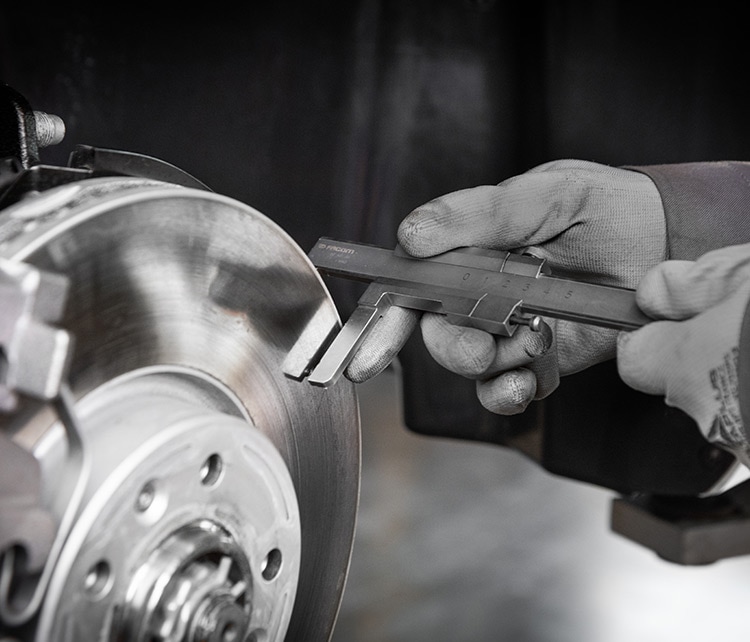
THE ESSENTIAL BRAKES SERVICE
As your safety is essential, regular checks of the brakes by a Citroën specialist will prevent braking distances getting longer.
- This system must be reliable, efficient and sustainable over time
- Keep complete control over the drums, pads, discs and callipers
THE CITROËN BRAKES SERVICE
One all-inclusive parts and labour price and no surprises for optimum braking with replacement of the:
- front and/or rear brake pads
- or front and/or rear brake discs and pads
- or rear drum brake kit
- or brake fluid
- accompanied by 15 visual checks by Citroën experts
Optimise your brakes
- After changing the pads, break them in by lightly applying the brakes several times in a row
- After washing your vehicle, lightly apply the brakes to allow the heat generated to dry the parts
- Finally, remember that any braking system only performs well when the shock absorbers and tyres are in good condition
Be alert
The braking system should respond instantly and precisely when you use the pedal. If you observe one or more of these signs of wear, contact your Citroën service centre as soon as possible for advice.
- The vehicle swerves when braking: a wheel cylinder or a calliper may be seized, or more simply a tyre could be deflated. Worn shock absorbers can also have the same consequences
- The vehicle vibrates when braking: it is most likely caused by faulty brake discs, a loose part, or excessive slack in the front or rear axle
- The vehicle "judders" when braking: if the brakes lock up at the slightest strain, it may be a sign of a problem with the discs, drums or brake linings
- The brake warning light comes on: your handbrake is on, the fluid level is too low or the pads are too worn. Do not take this warning lightly
- The brake pedal is hard: this could be due to a failure of the brake assist, hydraulic hoses or circuit, wheel cylinders or callipers
- The brake pedal is soft: the pedal sinks into a vacuum, you have to “pump” to be able to brake. Be careful, this is the sign of a serious problem with the hydraulic system

